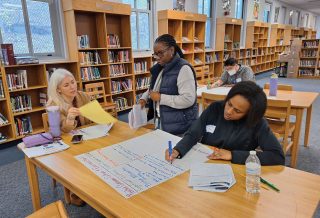IDEAS
Plan, but be prepared to pivot
By Jody Spiro
Categories: Collaboration, Fundamentals, Leadership, Learning communities, School leadership, System leadershipAugust 2022
Read the remaining content with membership access. Join or log in below to continue.
Sed ut perspiciatis unde omnis iste natus error sit voluptatem accusantium doloremque laudantium, totam rem aperiam, eaque ipsa quae ab illo inventore veritatis et quasi architecto beatae vitae dicta sunt explicabo. Nemo enim ipsam voluptatem quia voluptas sit aspernatur aut odit aut fugit, sed quia consequuntur magni dolores eos qui ratione voluptatem sequi nesciunt. Neque porro quisquam est, qui dolorem ipsum quia dolor sit amet, consectetur, adipisci velit, sed quia non numquam eius modi tempora incidunt ut labore et dolore magnam aliquam quaerat voluptatem.
Reflections from leaders
“The pandemic has taught us what we are capable of doing and that our commitment to serving our students and communities allows us to do the impossible.”
“We need to be innovative and creative in finding ways to keep our focus on setting high expectations for student achievement moving forward while taking care of all of the people who play a large role in educating our students.”
References
Spiro, J. (2018). Leading change handbook: Concepts and tools. The Wallace Foundation.
Spiro, J. (2012). Winning strategy. JSD, 33(2), 10-16. learningforward.org/journal/implementation-2/winning-strategy/

Jody Spiro (jodyspiro50@gmail.com) is a professor and author in education leadership and systems change and a senior advisor to Learning Forward.
Categories: Collaboration, Fundamentals, Leadership, Learning communities, School leadership, System leadership
Recent Issues
NAVIGATING NEW ROLES
April 2025
Whether you’re new to your role or supporting others who are new,...
LEARNING DESIGNS
February 2025
How we learn influences what we learn. This issue shares essential...
BUILDING BRIDGES
December 2024
Students benefit when educators bridge the continuum of professional...
CURRICULUM-BASED PROFESSIONAL LEARNING
October 2024
High-quality curriculum requires skilled educators to put it into...











